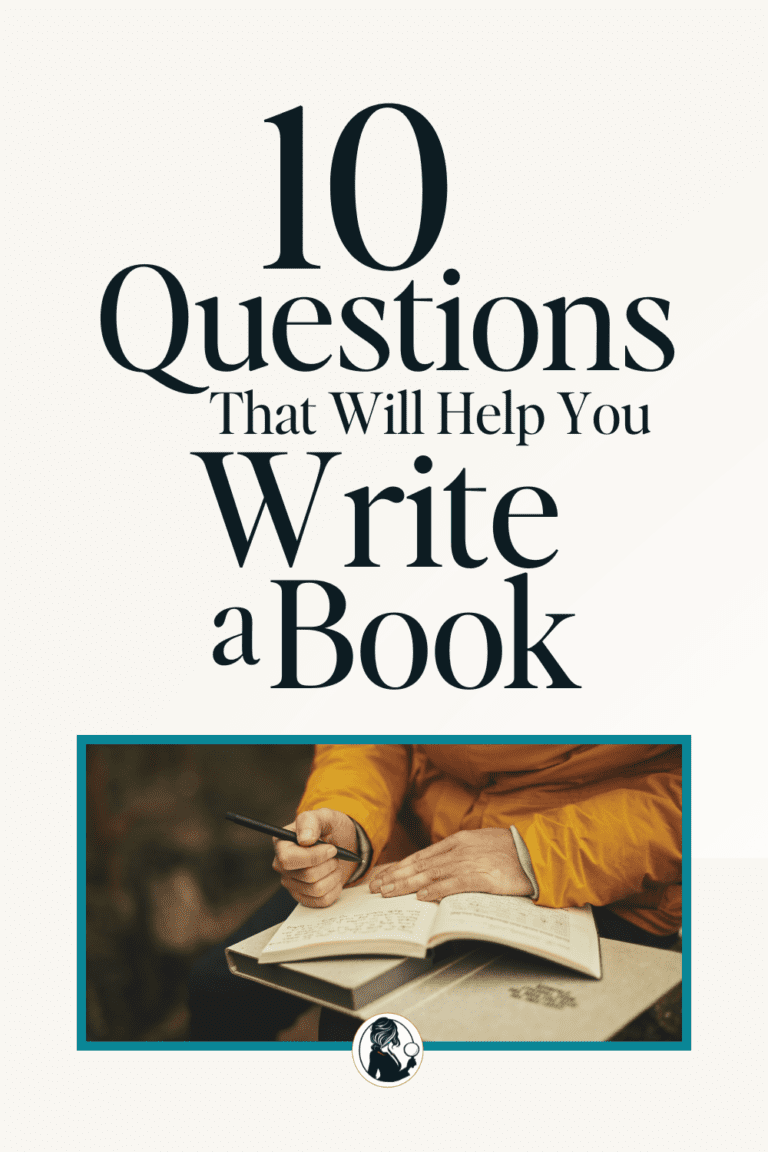Rules of Writing: The Top 5 You Might Be Breaking
You’ve decided to write a book and chances are good that you’ve spent any time around the internet searching out articles on writing craft and you’ve heard of the infamous (queue James Earl Jones voice here) Rules of Writing. The ones you’re not supposed to break (except for the people who do).
Every writer has an opinion about the rules (including moi). So of course, my blog. My opinion. 😉 I thought I’d share some of the simple rules of writing that both tortured and helped me as I wrote and focused on my craft.
Rule #1: Show Don’t tell.
This is probably the most shared piece of advice any writer has heard. Show, don’t tell. At the most basic level, it is stating that in your story, you want to illustrate what’s happening or what someone is feeling by using the senses, instead of just telling us. For example:
Molly was really afraid to go outside.
This is a telling example. We aren’t pulled into the moment. We don’t feel her fear. It’s a matter-of-fact statement that could be said in any situation. A way to look at whether you’re telling the story or showing it — is actually in the telling. If you could picture yourself saying the words in a conversation with someone, you’re telling the story:
Jane was in a car accident yesterday. She hurt her back pretty badly and ended up in the hospital.
That is telling the story. But there is no emotion, no context, no action — and no drama of reaction in the moment. Is Jane the narrator? Or is someone else? If Jane is the narrator, we should see the accident… the ride to the hospital, whatever she remembers and how she remembers it. If it’s someone else, we need to see their reaction to the news. That’s showing us how this part of the story impacts those involved —because we’re watching it unfold.
An example: Terry was very angry.
This is both passive voice and telling the reader, rather than showing her being angry. What does Terry do when he’s angry? How does he sound? Look? Think? Depending on if you’re in his point of view, how does he think differently? Move differently? If you’re in someone else’s point of view, what are the emotions they are feeling at Terry’s anger?
Show versus tell. One quick hint that always helped me> Tell it like a story, show it like a movie.
Culprits in your story that will help you improve on this:
- Presenting the storyline factually — if you are telling the reader like an outline
- your paragraphs aren’t conveying the reaction of emotion, in the moment the reactions are happening
- If you have long paragraphs of movement or descriptions of activities
- overly descriptive dialogue tags — if you’re using a lot of tags on your conversations, such as ‘she exclaimed’ or “he angrily replied”
- Adverbs —
- The word very can sometimes be an indicator. “She was very angry.”
Rule #2: Use an active voice
This one. Oh, this rule was the bane of my existence as an early writer. I read it often, and heard about it but it always felt elusive. I struggled to understand what it meant but more, how to apply it to my pages.
In my early learning days, I joined a lot of critique groups. The good ones are worth their weight in gold. It’s where I learned that there were rules of writing and how to start following them. (The bad ones… just better left behind.) But in one of those groups, there was an amazing writer named Lynn who took me under her wing a bit. She took a story that needed a lot of work and helped me understand what this item — Use an active voice — meant. I didn’t get it. I struggled with it, even as I thought I was getting it.
One day, I received my chapter back from Lynn. In the mail. (Yes, it was a point and yes, it was that long ago.) The pages (I still have them somewhere) were printed out and on every page, Lynn had highlighted every single word that ended in -ing.
I can tell you, my characters were I N G-ing all over the place. She was walking. He was running. They were talking. Someone else was thinking. Books were read by Jane. The tire was changed by Diane. You’re getting the point, I hope. (And if not, the active versions of these sentences would be: She walked. He ran. They talked. Jane read a book. Diane changed a tire.)
This illustrated the concept for me in a way nothing else had. And it turned my writing around.
Culprits to spot in your chapters:
- verbs that end in -ing, a lot.
- Your verbs are led with ‘was’ first.
- the subject of the sentence isn’t performing the verb action (Books were read by Jane, instead of Jane read the books.)
Rule 3: Start Your Story in the Action
Chapter One (or any chapters thereafter) is not a place for backstory. One of the best pieces of advice I’ve heard regarding this : Look at the first three chapters of your draft — and cut them.
Oh fie on the rules of writing, you say? Yes, I know. You’re killing your darlings. But do it anyway. Consider your story start there. How much of those first three chapters did you really need? Can bits and pieces of what’s there be peppered into the rest? This is one of the rules of writing that will determine whether someone reads your novel or puts it down.
Starting in the “action” doesn’t mean someone is in the middle of a chase scene. It means that the start of your story hooks us in immediately. Nora Roberts is a queen of the hook. So is Lisa Gardner. They put the protagonist in the middle of doing something — for instance, in Key of Light, from Nora Robert’s Key Trilogy, her heroine, Mallory is heading up a mountain to a mysterious invitation.
The storm ripped over the mountains, gushing torrents of rain that struck the ground with the sharp ring of metal on stone. Lightning strikes spat down, angry artillery fire that slammed against the cannon roar of thunder.
There was a gleeful kind of mean in the air, a sizzle of temper and spite that boiled with power.
It suited Mallory Price’s mood perfectly.
Hadn’t she asked herself what else could go wrong? Now in answer to that weary, and completely rhetorical, question, nature—in all her maternal wrath—was showing her just how bad things could get.
There was an ominous rattling somewhere in the dash of her sweet little Mazda, and she still had nineteen payments to go on it. In order to make those payments, she had to keep her job.
She hated her job.
Nora does a beautiful job of threading in just enough of Mallory’s backstory details to make you care about where Mallory is going. There are details of what contributes to Mallory’s state of mind and you know as you’re reading that this invitation and where she’s going is going to change everything for her. That is action at the moment.
Culprits to spot in your story:
- Your beginning focuses on the history, things that happened before the moment of the book, to “explain” the current moment
- Long paragraphs of “setting the stage”
- Your character is in peril before the reader has time to care
For more information here, read 5 Foolproof Methods for Starting Your Story
Rule 4: Realistic (but not too realistic) Dialogue
“Hey.” Dan looked up as Jane walked in.
“Hi,” Jane said casually.
“Terrible commute today.”
“Yeah. I sat on the bridge for at least 30 minutes!” Jane exclaimed.
“That sucks. Are you going to the breakroom? I’ll come with. I need some coffee.”
“Yeah. Let me just put my stuff down.”
This is a very typical workplace conversation when two people walk in the same door to arrive at their jobs. It’s also an incredibly boring (and badly written) conversation…and not something that should be in your book. Every piece of dialogue has a purpose in your book — and it isn’t going to mimic real life. It should sound like real people, but not how we actually talk to each other every day of our lives. The #4 rule is one of the rules of writing that helps keep your readers engaged.
When a conversation like this could come into play is with subtext. If Dan and Jane had decided to get divorced the day before, and they still had to work together?
“Hey.” Dan looked up at Jane walked in.
“Hi.” She stood next to his desk, on the other side of the room from hers. No, today wouldn’t be awkward at all. If she could get through it without crying, it would be a miracle.
“Terrible commute today.” Dan almost whispered the words, and the truth wrenched her heart. Because his commute wasn’t hers anymore. He lived somewhere else.
“Yeah,” she managed. “I sat on the bridge for at least 30 minutes.” Alone. Every minute inching up the tension knowing she would see him soon.
“That…sucks.” Two small words that spoke volumes. He stood up, his eyes sad and hopeful. “Are you… are you going to the breakroom? I’ll come with. I need some coffee.” She wanted to run. But she couldn’t. They worked together, and they both needed their jobs. Especially now with two households. She had to find a way to make it through the day.
“Okay.” She nodded. “Let me just put my stuff down.”
While I would likely rewrite this multiple times (it’s the first draft), the subtext and context behind the words bring out emotions. So while your dialogue doesn’t need to be dramatic, the situations around it should build on the story.
Culprits in your story:
- Dialogue that doesn’t move the story forward, either by subtext or what is learned/shared
- The characters all sound the same. They should have their own cadence and sound
- Descriptive dialogue tags, and too many of them — stick with ‘said’ most often, and you actually need them far less than you realize.
- Adverbs attached to your dialogue tags — she spoke angrily. He said emphatically. These are indicators that your dialogue and subtext aren’t doing the work.
- Your dialogue recaps story — dialogue shouldn’t repeat something that just happened unless you are learning something new — either new information or a new perspective that shifts what the reader thinks
Rule 5: Don’t head hop — Find a Point of View and stick to it
Ah. The head-hopping. Point of View (POV) is one of the toughest rules of writing to master. When I was learning this, I also read every author I loved to learn from their styles — what I liked, and didn’t like. And I’ll tell you, in a lot of Nora Roberts’ books, she head-hops. Of course, she is a master and knows how to break the rules brilliantly. But when you’re trying to learn the rules, it makes for a tough read. Why is this a rule? Because when done wrong, it’s distracting and confusing.
Head hopping means that the person who is telling you the story from their eyes. Most often, you’ll find POV is shared in two ways:
- third person: “He watched the sun go down.” or
- first person: “I watched the sun go down.”
When you’re writing your story from one person’s perspective (or POV), it means you stay within what they think, know, see and their world view. Choosing the right type of POV for your story (first or third) is key, as well — because you may need more than one perspective to tell a good story. Romance novels are a perfect example: you need the hero and heroine’s points of view to fully enjoy their coming together.
Culprits in your story:
- You’re providing information the narrator in that moment wouldn’t know
- The description you’re giving isn’t something the person would see or think. (A girl who doesn’t see herself as beautiful wouldn’t describe herself that way. But the boy who falls in love with her might.
- Hopping back and forth between different characters’ thoughts in a single scene
- Select the right POV style for the story
- Head hopping — limited third-person POV
- Descriptions aren’t something the person would see or think: literally look at the moment from their eyes, where they are standing, and only what they would notice
So, why are there rules of writing? Especially when so many of the masters break them? Isn’t it okay to just break the rules? Yes. After you’ve learned them. After you’ve studied them so well, you know when it works better to break a rule versus just muddies the story. The rules of writing aren’t to back you into a corner. They’re there to help you learn the craft of writing — how to tell a compelling story that your reader doesn’t want to put down. Don’t give up — this is a craft and it can be learned. You are learning it, right now.
And when you’re Nora, no one will tell you how to do it either. But for now… I hope these tips help you as much as they helped me along the way.





